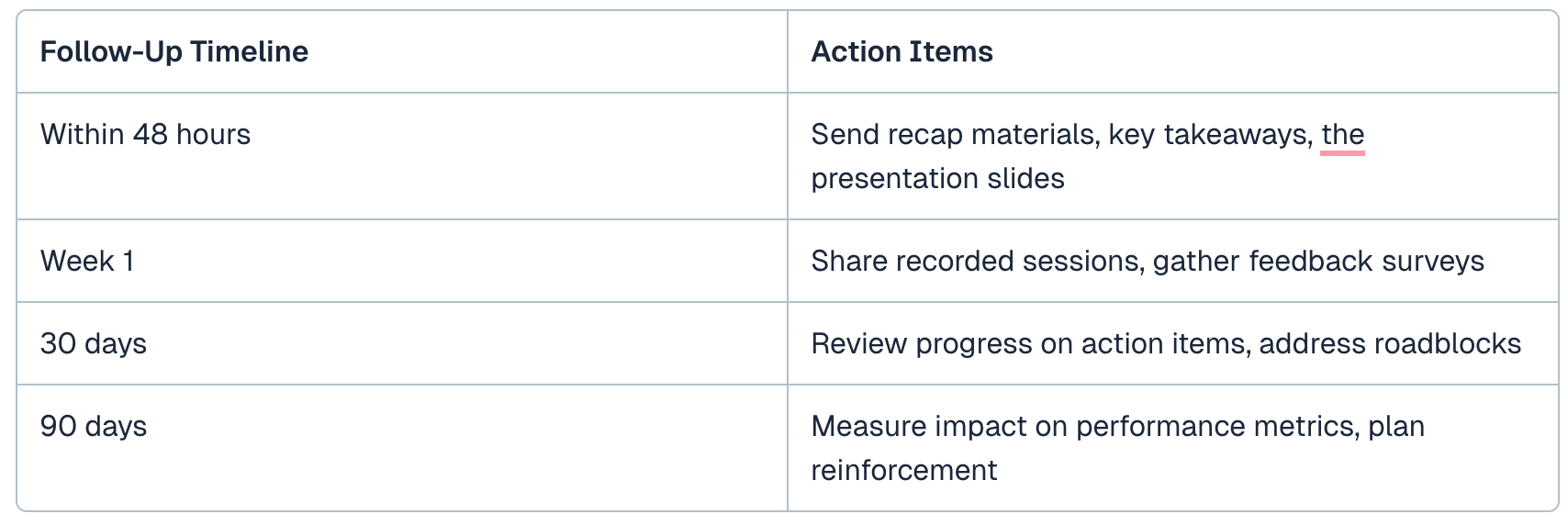9 Tips to Make Your Sales Kickoff Memorable and Motivating
ByJulian Gette
Workast publisher

Workast publisher
Sales kickoff meetings set the tone for your team's entire year. They're where strategies are unveiled, goals are established, and motivation peaks. Yet research shows 85% of companies fail to make their SKOs as impactful as they could be.
The difference between a forgettable meeting and one that drives real results? Proper planning and smart task organization. When you approach your SKO with intention, you transform it from a mandatory gathering into a launchpad for success.
Don't wait until January to plan your sales kickoff. The most successful SKOs begin taking shape months in advance, giving your team time to secure venues, coordinate schedules, and develop meaningful content. Build a diverse planning committee that includes representatives from sales, marketing, operations, and enablement. Using effective task management strategies helps ensure every team member knows their role and deadlines throughout the planning process. Each person should take ownership of specific responsibilities such as handling logistics, creating content, or managing communications.
Start by getting your leadership team on the same page. Schedule meetings with executives to align on objectives, budget, and expected outcomes. When leadership is invested from day one, you'll have the resources and support needed to deliver a memorable event.
Death by PowerPoint kills more SKOs than poor planning. Your team can't absorb eight hours of presentations, no matter how important the content. Include hands-on activities that require participation. Many companies bring in corporate mentalists like Christophe Fox, who helps reinforce key messages through strategic engagement techniques that maintain audience focus and strengthen the connection to core themes. Role-playing exercises, breakout strategy sessions, and team challenges force active engagement rather than passive listening.
Break information into digestible 30-45 minute segments. Mix formats throughout the day – alternate between presentations, live product demos, panel discussions, and interactive workshops. This variety maintains energy and improves retention.
Every successful SKO starts with crystal-clear goals. Are you launching a new product? Introducing a revised sales methodology? Rallying the team after a challenging quarter?
Define 3-5 specific objectives for your event. These might include increasing product knowledge by 40%, aligning teams on Q1 priorities, or improving cross-department collaboration. Whatever you choose, make sure each goal is measurable.
Share these objectives with attendees before the event. When your team understands the "why" behind the meeting, they arrive ready to engage. According to Gallup research, employees who understand how their work contributes to organizational goals show significantly higher engagement levels. Use task organization principles to ensure every session, activity, and break time serves a defined purpose.
A strong theme transforms disconnected sessions into a cohesive experience. It gives your team something to rally around and makes your message more memorable.
Your theme should reflect your company's current position and aspirations. If you're entering new markets, consider "Breaking Boundaries." For a year focused on customer success, try "Champions of Experience."
Weave this theme throughout every element, from presentation slides to swag items. Consistency reinforces your message and creates experiences that stay with attendees long after they return to their territories.
Transform your SKO from a lecture series into a working session by distributing materials beforehand. Send product updates, competitive intelligence, and strategy documents about two weeks before the event.
This approach helps attendees arrive informed and ready to discuss rather than spending valuable time on information they could have reviewed earlier. You will have deeper conversations and more productive collaboration.
Keep pre-work reasonable at no more than 3 hours, and make it easy to digest with videos, infographics, and clear summaries.
The best SKOs hit three distinct notes throughout the event. Each serves a specific purpose in motivating and preparing your team.
Inspiration comes from keynote speakers, success stories from top performers, or messages from leadership about the year ahead. These moments remind everyone why their work matters and help high-performing culture that extends beyond the event itself.
Education provides the practical skills and knowledge your team needs. This includes product training, new sales methodologies, competitive positioning, and tool demonstrations.
Celebration recognizes past achievements and top performers. Announce awards, share customer wins, and highlight team milestones. Recognition fuels motivation and shows your organization values excellence.
Your official agenda matters, but don't underestimate unstructured time. Some of the most valuable connections and conversations happen during coffee breaks and evening socials.
Schedule 15-minute breaks every 90 minutes to prevent mental fatigue. Provide comfortable spaces where people can recharge, check messages, or simply decompress from the information flow.
Build in longer networking periods where team members from different regions can connect. Research shows that workplace friendships significantly boost engagement and performance, making these informal moments critical to your SKO's success. Organize optional activities like group dinners, recreational outings, or casual happy hours.
Project management tools are game-changers for SKO planning. Create a master project with clear task ownership and deadlines.
This transparency keeps everyone accountable and ensures nothing falls through the cracks. Your planning team can see progress at a glance and identify bottlenecks before they become problems.
For remote or distributed teams, consider hybrid formats that include virtual attendees. Use quality streaming equipment and interactive tools like live polls and virtual breakout rooms to keep remote participants engaged.
Your SKO doesn't end when attendees leave the venue. The real test comes in the weeks that follow. Assign specific next steps with clear owners and deadlines. If you introduced a new sales process, schedule follow-up training sessions. For strategic initiatives, establish systems that track productivity while maintaining team motivation, and set check-in dates to monitor progress toward your SKO goals.
Within 48 hours, distribute a comprehensive recap package. Include key presentation slides, training materials, action items, and contact information for subject matter experts. Make this easily accessible through your company’s intranet or shared drive.
A memorable sales kickoff doesn't happen by accident. It requires early planning, clear objectives, and meticulous task organization throughout the process.
Focus on creating an experience that balances inspiration with practical education. Keep sessions interactive, leverage technology to stay organized, and follow up with concrete action items that maintain momentum.
When you invest in proper planning and execution, your SKO becomes more than an annual meeting. It transforms into a catalyst that drives team productivity and sets your organization up for success throughout the entire year.



